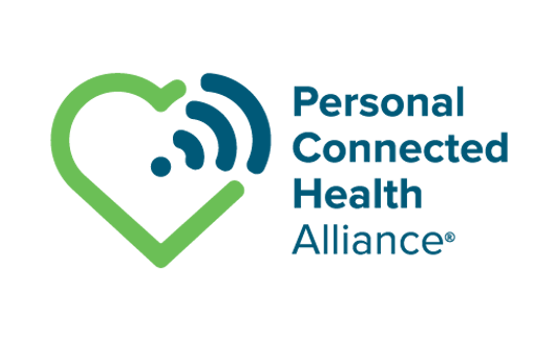 The Personal Connected Health Alliance (PCHAlliance) today released the latest version of the Continua Design Guidelines (CDGs) to enable the secure, private, reliable and accurate sharing of patient generated health data (PGHD) with healthcare providers, built-on HL7 FHIR (Fast Healthcare Interoperability Resources) specifications. The Design Guidelines now support the integration of personal health data from 26 vital signs sensors and 40 health, medical and fitness devices for telehealth and telemonitoring of chronic diseases, including diabetes, heart failure, hypertension and COPD, as well as health and fitness measures.
The Personal Connected Health Alliance (PCHAlliance) today released the latest version of the Continua Design Guidelines (CDGs) to enable the secure, private, reliable and accurate sharing of patient generated health data (PGHD) with healthcare providers, built-on HL7 FHIR (Fast Healthcare Interoperability Resources) specifications. The Design Guidelines now support the integration of personal health data from 26 vital signs sensors and 40 health, medical and fitness devices for telehealth and telemonitoring of chronic diseases, including diabetes, heart failure, hypertension and COPD, as well as health and fitness measures.
"I believe an urgent priority for our healthcare system is to move from the traditional one-to-one model to a more efficient, time- and place-independent care delivery system. Enabling the seamless and secure sharing of patient-generated data is an important step towards achieving this, and will improve our ability to manage chronic conditions," said Joseph C. Kvedar, MD, Vice President, Connected Health, Partners HealthCare, and PCHAlliance Board member. "Integrating these patient data into the EHR is imperative, and the new Continua Design Guidelines help us accomplish this critical step."
The Continua Design Guidelines define an open, flexible framework for end-to-end interoperability and the convenient collection and exchange of clinical grade health data for improved health, wellness and disease management. They are built on existing open, international standards and specifications including ISO/IEEE, IEC, HL7, USB and Bluetooth. The International Telecommunication Union (ITU) recognizes the Continua Design Guidelines as a formal international standard for personal health systems and makes them available for global adoption in the six official languages of the United Nations, including Arabic, Chinese, English, French, Russian, and Spanish.
"This new version of the Design Guidelines further advances PCHAlliance's mission -- to help people make health and wellness an effortless part of daily life. By simplifying the secure exchange of personal health data, we are supporting the adoption of PGHD by health providers and health systems to improve care delivery and clinical outcomes," said Patricia Mechael, PhD, MHS, Executive Vice President, PCHAlliance. "Our new Guidelines offer distinct advantages to healthcare providers and patients, and we will continue to work with governments, providers, payers and manufacturers to ensure personal connected health systems are built on and certified using open Continua interoperability standards."
In addition to technical specifications and implementation instructions, Continua Design Guidelines comprise a reference architecture, product test and certification tools and services. By certifying products to Continua, companies actively contribute to the evolution of the personal connected health economy and demonstrate their commitment to ensure safe, secure data transfer for their customers. The Guidelines are developed through a collaborative process in PCHAlliance's Continua Global Technical Committee, and are approved in a ballot among all leading members.
"The latest Continua Design Guidelines reflect state of the art practices in health IT, privacy, security, reliability and accuracy of Continua certified products," added Ian Hay, Head of Emerging Ecosystems, Standardisation and Ecosystem Development, Orange. "These specifications enable remote monitoring of chronic conditions including diabetes, heart failure, hypertension, and COPD. We will continue to focus on making interoperability for personal health monitoring effortless and reliable, in support of the Internet of healthy things."
Continua Certified products carry a recognizable logo signifying clinical-grade interoperability with other Continua Certified products. Any organization that develops a health, medical or fitness product can certify to the Continua Design Guidelines by following the certification process. This includes hundreds of health, medical and fitness device types, all with a direct path to the electronic health record (EHR).
About Personal Connected Health Alliance
The Personal Connected Health Alliance (PCHAlliance) aims to make health and wellness an effortless part of daily life. The PCHAlliance, a non-profit organization formed by HIMSS, believes that health is personal and extends beyond healthcare. The Alliance mobilizes a coalition of stakeholders to realize the full potential of personal connected health. PCHAlliance members are a vibrant ecosystem of technology and life sciences industry icons and innovative, early stage companies along with governments, academic institutions, and associations from around the world. To support its vision, PCHAlliance convenes the global personal connected health community at the annual Connected Health Conference, the premier international event for the exchange of research, evidence, ideas, innovations and opportunities in personal connected health. The Alliance publishes and promotes adoption of the Continua Design Guidelines. Continua is recognized by the International Telecommunication Union (ITU) as the international standard for safe, secure, and reliable exchange of data to and from personal health devices. PCHAlliance accelerates technical, business, policy and social strategies necessary to advance personal connected health through its flagship Healthy Longevity initiative to promote lifelong health and wellness.